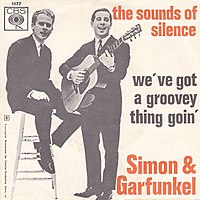Piano Sheets > Simon & Garfunkel Sheet Music > Sound Of Silence - The (ver. 2) Piano Sheet
Sound Of Silence - The (ver. 2) by Simon & Garfunkel - Piano Sheets and Free Sheet Music

About the Song
"The Sounds of Silence" is the song that propelled the 1960s folk music duo Simon and Garfunkel to popularity. It was written in February 1964 by Paul Simon in the aftermath of the assassination of President John F. Kennedy on November 22, 1963. Simon conceived of the song as a way of capturing the emotional trauma felt by many Americans.[citation needed]
The song features Simon on acoustic guitar and both Simon and Garfunkel singing. It was originally recorded as an acoustic piece for their first album Wednesday Morning, 3 A.M., but was later overdubbed with electric instruments and re-released as a single in September 1965. The single slowly climbed the charts until it reached number one on New Year's Day 1966. The song was included in the 1966 album Sounds of Silence.
The song was originally called "The Sounds of Silence," and is titled that way on the early albums in which it appeared.
Download this sheet!
About the Artist

Random article
How to read sheet music How to read sheet music
Reading piano sheet music is no simple thing. For it first we require to know the individual elements of the composition itself in order to read sheet music. You must make sure that you are familiar with that particular composition's language before you tackle the entire piece.
In order to grasp the intent and nuances of the piece quickly for reading piano sheet music following steps are to be considered:-
1> To start with have a look over entire composition to get the feel of the length and style of the sheet music. This first run through is just to have a quick overview of the composer's work. This will slowly prepare you to read the sheet music.
(More...)
